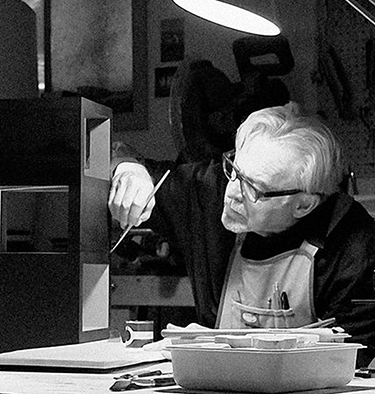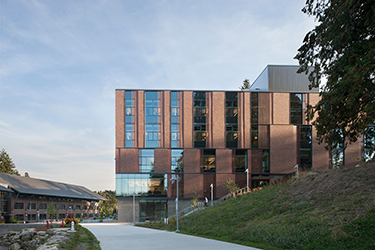|
Subscribe / Renew |
|
|
Contact Us |
|
| ► Subscribe to our Free Weekly Newsletter | |
| home | Welcome, sign in or click here to subscribe. | login |
Architecture & Engineering
| |
March 16, 2023
Prominent Oregon architect Thomas Hacker passes away
Thomas Hacker, one of Oregon's most influential architects, passed away at the age of 81 on Feb. 27.
Hacker's works have often filled the pages of the DJC and his designs include some of Oregon's most prominent civic, museum, library, and educational buildings. The High Desert Museum, Columbia Gorge Discovery Center, Portland State University's Urban Center, the Beaverton Central Library and Multnomah County's Woodstock branch libraries are among his many projects.
Hacker was born in Dayton, Ohio, in 1941. He earned his Bachelor of Arts from the University of Pennsylvania and his graduate degree from the Master of Architecture program at University of Pennsylvania's Graduate School of Fine Arts in 1963.
Hacker's talent caught the eye of heralded professor and architect Louis Kahn who after graduation hired Hacker as a draughtsman and swiftly elevated him to personal design assistant. In the 1970s Hacker taught at the University of Oregon, a position he held for 14 years.
In 1986 Hacker left full-time academia to start Garfield Hacker Architects with Richard Garfield, a fellow student and former colleague in Kahn's office in Portland.
Oregon Health Science University's Biomedical Information Communication Center (BICC) became the fledgling firm's first important commission. Completed in 1991 the BICC is one of the first fully computerized libraries in the country. Hacker and his team's design rises between an urban and natural landscape. The library faces the historical buildings on campus and main street in stout forms of stone, while stretching into a wooded ravine behind with an open concrete grid that, infilled with windows and walls of glass block, reaches into the treetops.
In 1992 Hacker split from Garfield to become Thomas Hacker Architects. Distinct from other offices, the firm worked almost solely on civic, cultural, and educational buildings and steadily expanded to do work beyond Oregon. The firm's projects in Washington include the Spokane Public Library, the renovation of Architecture Hall at the University of Washington's Seattle campus, and Discovery Hall at UW's Bothell campus.
Those who knew Hacker described him as being ambivalent toward architectural stardom with staunch convictions that “architecture, at its essence, is a servant to humanity.” While Hacker focused tightly on public-funded buildings, the range of types and settings was wide. The Columbia Gorge Discovery Center in The Dalles, for instance, balances the sheltering security of a simple post-and-beam construction found in any Indigenous plank house or common settler barn but with proportions befitting a basilica or temple framing views of the eastern Gorge's sensually rolling hills. In contrast, for the highly urban context of downtown Portland, Hacker's design for the PSU Urban Center features muscular brick-clad walls on three sides that opens with expansive glass and loggia-topped terraces to the central public plaza balancing the dignity of a Roman forum with the easy-going feel of a medieval marketplace.
Hacker was known for his understated design style. “Thom's designs are brutally simple in plan, simple in section and simple in elevation,” Robert Thompson who's very different, but equally award-winning work emerged in tandem with Hacker's in the ‘80s and ‘90s said in a statement announcing Hacker's passing. “It is elegant, understated and beautifully refined. He understood context at the level of the street and the landscape. You drive around and can always recognize a Hacker building. They're as good today as the day they were finished. You can't say that about a lot of work.”
Hacker continued to practice architecture until his retirement in 2018. For a full decade leading up to that, he worked intentionally to ensure the values and purpose of the firm would be carried forward beyond his own career. Post retirement he reinvested himself in his sculpture and painting.
Through his time teaching and hiring of talented young designers, Hacker has inspired and mentored two generations of architects. “Thom couldn't have been more charismatic if he tried,” recalls Brad Cloepfil, one of his most accomplished students whose firm, Allied Works Architecture, has become one of the nation's leading design firms. “He had a complete intensity and belief in what he's doing. Every discussion had an ethical foundation and bigger aspiration. To this day, it's rare that people talk about architecture in that way.”
Hacker is survived by his wife Margaret, son Jacob, daughters Sarah and Alice, and grandchildren Noah, Ava, Owen, Gibson, Leon, and Moss.
This article is edited and adapted from a longer memorial piece written by Hacker Architects. The full piece is at https://www.hackerarchitects.com/home/thomas-hacker.




